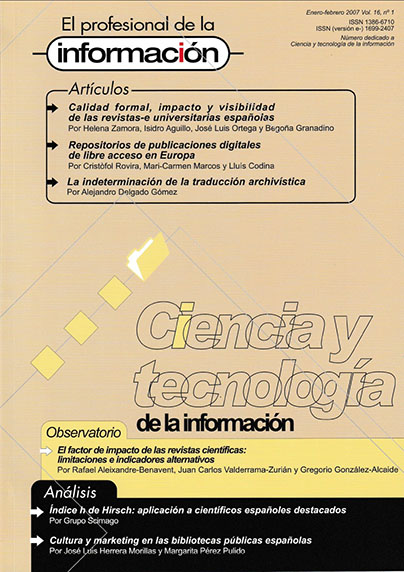Scientific journals impact factor: limitations and alternative indicators
DOI:
https://doi.org/10.3145/epi.2007.ene.01Keywords:
Bibliometric indicators, Impact factors, Research assessmentAbstract
Impact Factor measures the average number of times that articles published in the last two years are cited in the current year. In spite of its limitations, the evaluation agencies of some countries like Spain use it in research assessment, generating a deep unease within some circles that consider its use inappropriate and indiscriminate. As an alternative to the Impact Factor of Thomson ISI, other indicators have been proposed, although none of them have achieved sufficient acceptance and widespread use to be systematically applied. Among Spanish initiatives, most notable are the Potential Impact Factor of The Spanish Medical Journals, developed by the Siniac team (Information systems and research activity indicators) from the Instituto de Historia de la Ciencia y Documentación López Piñero (Valencia, Spain), and the índice de impacto de las revistas españolas de ciencias sociales (In-Recs), developed by the EC3 research group at Library and Documentation department of Granada University (Spain).
Downloads
Downloads
Published
How to Cite
Issue
Section
License
Dissemination conditions of the articles once they are published
Authors can freely disseminate their articles on websites, social networks and repositories
However, the following conditions must be respected:
- Only the editorial version should be made public. Please do not publish preprints, postprints or proofs.
- Along with this copy, a specific mention of the publication in which the text has appeared must be included, also adding a clickable link to the URL: http://www.profesionaldelainformacion.com
- Only the final editorial version should be made public. Please do not publish preprints, postprints or proofs.
- Along with that copy, a specific mention of the publication in which the text has appeared must be included, also adding a clickable link to the URL: http://revista.profesionaldelainformacion.com
Profesional de la información journal offers the articles in open access with a Creative Commons BY license.




